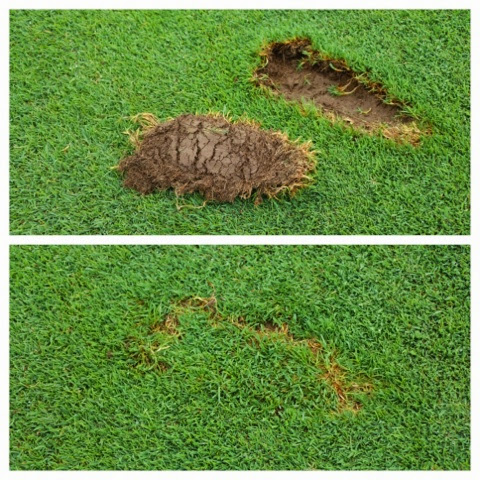Dear Members & Friends,With summer and
the golfing season in full swing, it’s time to discuss our upcoming golf
course tee project that’s scheduled to start September 2nd. As
many of you already know, the club has been working with golf course
architect Chris Wilczynski now for the past 4 seasons. For those of you
that don’t know, Chris is a disciple of Art Hills and worked 20+ years
for Art’s firm, designing golf courses all over the world. Chris enjoys
our golf course and shares many of the same visions Art Hills had for
our course back in the early 90’s. The first phase of our masterplan
project was to remove all the dead and or dying trees from the golf
course, essentially cleaning up the pallet. Now that we have a decent
handle on the tree situation, it’s time to complete the next phase
towards the completion of our masterplan vision for Gull Lake C.C. and
our wonderful golf course.
The golf and grounds committees have
been actively working along side the architect for the past year,
planning out and tailoring the tee renovation project to fit our needs
as a club. The main initiatives for this tee project were to create
several new forward tees for women and seniors along with
expansion/leveling of several other existing tee boxes. The golf course
is becoming dated and needs to be updated and modernized in several
locations, to benefit golfers at all skill levels. While this project is
going to be a nice update to the golf course, it is going to come with a
small disruption to play for a period of time. We will be cutting
temporary tee box locations in the rough or placing tee markers at the
beginning of the fairway on holes under construction. This will only be a
small disruption to your round of golf, as the rest of the golf course
will remain in fantastic condition as always.
Scope of work:#1 – New forward tee at beginning of fairway on Right.
#2 – Expand existing forward tee by three times the size.
#3 – Expand and Level existing back tee.
#7 – Expand and Level existing forward tee.
#8 – Move existing back tee 15’ Right and add new forward tee near beginning of fairway.
#9 – Expand and realign all three existing tees.
#10 – New forward tee at beginning of fairway on Left.
#11 – Expand and Level existing forward tee.
#12 – Expand and Level existing back tee with cart path and add new forward/middle tee.
#14 – Expand and Level existing back tee.
#16 – Expand and Level existing forward tee.
#17 – New forward/middle tee near beginning of fairway.
#18 – Expand and Level existing middle and back tees.
The project is scheduled to begin on Tuesday, September 2nd and will be completed in one month if all goes as planned and Mother
Nature cooperates. If everything goes perfectly here is what you can
expect during and after the completion of the tee project. While this is
a fairly large project, we plan to keep disruption to golfers and haul
roads to a minimum during the time of construction. The tee box surfaces
are going to be seeded to bentgrass upon completion of grading/shaping
each tee box and the tee banks will be sodded with new bluegrass rough
sod. The bentgrass seed on the tee boxes will require some establishment
time and patience as it matures and fills out into a dense stand of
turf. We hope to have the new and renovated tees open next season by
Memorial Day if we have good growing conditions this fall and next
spring. It’s very important that we take advantage of the warm
ambient/soil temperatures the first half of
September, getting the bentgrass seed germinated and growing. The seed needs this
time to establish in order to stay healthy through the winter and finish
establishing come spring without a delay.
We are very excited
about the vision for the golf course here at Gull Lake C.C. and the
completion of this tee renovation project this season. This tee
project will come with minimal disruption to the property area as a
whole during construction and we hope you will embrace the improvements
to your wonderful golf course.
Regards,
Jesse Shaver
Grounds & Facilities Superitendent



































